How Otto Skorzeny fought in the battles near Moscow
November 27, 1941, when the German tank armies stubbornly rushed to Moscow, one of the formations of the 7th tank division of the Wehrmacht was tasked to capture a tactically important object - a carefully guarded auto-horse bridge across the canal named after. Moscow near Yakhroma. For this, a sabotage group was formed from among the most experienced volunteers under the command of Oberleutenant Rudolf Reineck.
She moved out of the division's concentration point at the end of daylight hours and secretly moved towards the object by the edge of the forest away from the roads - the commander led his people, guided by a compass and a map. As a result, under cover of the darkness of the night, the saboteurs managed to go unnoticed to the bridge, quickly and silently remove the sentries from the west side, then imperceptibly cross the bridge and take off the sentries serving on its eastern side with lightning speed. Then the sappers who were part of the group cut the wires leading to the charges of explosives laid in the base of the bridge pillars.
The capture was carried out so swiftly and at the same time silently that it passed completely unnoticed by the Red Army units located at some distance from the bridge, and discovered that the bridge was already in the hands of the enemy, only with the onset of daylight.
Moreover, the saboteurs acted so boldly that even for some time they coolly let the cars of the Red Army to the western side of the canal (to their captivity). And it did not occur to the drivers that the people in white camouflage suits who were greeting them, urging them to pass quickly without being checked, were not Red Army men at all, but fascists.
As a result, the Germans (in addition to the bridge) managed to get additional trophies in the form of 40 prisoners and 6 trucks.
You are probably now waiting for the following phrase:
I will disappoint you: there was no such thing and could not have been there in principle.
However, let's start in order.
Bluff about Otto's exploits near Moscow
Otto Skorzeny is the most famous saboteur during the Second World War. And many authors of publications even call it the best and most successful -
However, the more carefully you study his biography, the more doubtful such an assessment appears.
The purpose of this article is not a detailed analysis of all his successes and failures (there are already enough works devoted to this issue). It seemed to me the most interesting to highlight the most little-known period of Otto's military career - his participation in the summer-autumn offensive of the Wehrmacht (and, in particular, at its final stage) Operation Typhoon.
For a detailed analysis, I chose the period from October to December 1941, when the Germans were rushing to Moscow with their last strength, following the order to surround it and cut off all communications leading to the capital (German units were forbidden to enter the city).
It is worth noting that Skorzeny was still a little-known officer at that time and did not acquire a personal biographer. Therefore, information about how he fought in the above period and what he was famous for must be extracted from his memoirs.
It is well known that a memoir is a literary work where the author tries to present his actions in the most favorable light for himself.
Therefore, memories (in terms of historical accuracy) are the most unreliable source. And the information contained in them can serve only as an approximate information that needs careful verification by comparison with real historical documents.
For some reason, this simple rule is forgotten by many modern writers who publish books about the Great Patriotic War. Often they immediately take on faith any memoir evidence, supplement it with their own imagination, and then on this flimsy foundation they create some kind of colorful version of the development of events. And as a result, they find themselves in the wonderful world of alternative history.
Let's try to analyze the memoirs of Otto Skorzeny, making an allowance for the peculiarities of this genre, as well as for the inherent desire of every self-respecting military officer to boast and show off in front of the audience.
How Otto found the springs on T-34 tanks
When studying his memoirs, it is immediately striking that when describing events on the Eastern Front, Otto mainly uses the pronoun “we"And rarely uses"я».
Which testifies either to the greatest human modesty of the memoirist (which Skorzeny has never been distinguished by), or is due to the fact that during the period described, nothing worthy of a separate mention happened to the author.
But this feature of the presentation greatly complicates the understanding of who exactly the author means by "we" in various episodes of the narrative: his own unit, the entire division where he served, or, in general, collectively all the German troops participating in the offensive?
In addition, when describing the period of his service on the Eastern Front, Skorzeny stubbornly keeps silent about which units he served in; in what positions; in which military unit; whether the soldiers were subordinate to him and what they were doing; and never even mentions his military rank.
You have to get to this information on your own, following the tortuous path of guesswork, assumptions and borrowing data from various sources.
So, we open the memoirs and immediately discover with surprise that in the fall of 1941 Otto was not yet a saboteur. And, most surprisingly, he did not even take a direct part in the hostilities, that is, he did not fight with weapons in hand.
From the preface to the book, we learn that the 33-year-old Otto began the Eastern campaign with the rank of SS chief-Sturmführer, which corresponded to the rank of "senior lieutenant of the Red Army." From June 22, 1941 to early 1942, he served on the Eastern Front in the SS Reich Division. And at the beginning of 1942, due to illness, the future saboteur was sent to the deep rear for treatment. And he never returned to the front.
In the memoirs, there are several scanty information regarding Skorzeny's professional activities:
... When we reached the Desna, I was considered lucky, since I had a hundred trucks in good order;
... I received an order to pull out the trucks stuck on the "freeway";
... I recruited Russian prisoners of war mechanics to work - they were smart and inventive.
For example, they themselves guessed to replace the springs of our Horch-Kübelvagen cars with the springs of T-34 tanks. "
Despite the fact that the T-34 does not have springs, the above still allows us to put forward a fairly reliable assumption that Skorzeny served in some auxiliary unit on the Eastern Front. And his official duties included the implementation of measures for the maintenance and maintenance on the move of vehicles attached to some artillery unit of the SS "Reich" division.
Let us fix this important discovery in our memory and continue our further fascinating analysis of individual fragments of the memoirs of the world famous saboteur.
Nonsense about Rumor, which was not there
The last of them was destroyed by a shell from a 105 mm cannon 15 meters from our positions ...
Just in time! It really was an unusual episode.
Soon Rumor was promoted to the rank of Sturmbannführer (Major), and I received the Iron Cross of the II degree. "
It is worth noting that in this fragment, Otto is modestly silent about what kind of heroic actions he personally performed during the described battle.
Hence, it can be assumed that either Skorzeny kept silent about his feat out of modesty, or did nothing heroic. And he did not dare to lie openly in his memoirs (at the time of writing the book, there were still people who fought with him during the period described. And Otto did not want to get another batch of stinging ridicule in his address).
So, most likely, he received the award not for the feat, but "for participation." That is, he simply conscientiously did his job, as befits an officer of a belligerent army when everything goes according to plan. And you don't need to perform heroic deeds. And people are rewarded not for personal courage, but for the results of a successful offensive operation. According to the lists provided.
But with Rumor, the memoirist had a slight blunder.
In many sources there is information that Joachim Rumor arrived on the Eastern Front only at the beginning of June 1942 - he was transferred to the SS cavalry division as commander of an artillery regiment. On November 9 of the same year, he was promoted to Obersturmbannführer and was awarded the German Cross in Gold for his bravery on the battlefield.
Apparently, Skorzeny drew this episode from some publication. And he mistakenly cited it in his memoirs, frivolously transferring it to the summer of 1941.
Ghost - KV tanks near Borodino
They are tall, excellent soldiers, well-armed;
they were dressed in wide fur sheepskin coats and hats, and fur boots on their feet.
The 32nd Infantry Division from Vladivostok fought with us with the support of two new tank brigades, consisting of T-34 and KV tanks. "
In the battles in the Mozhaisk fortified area, the 32nd Infantry Division (erroneously named by the memoirist "Siberian") on different days was actually supported not even by two, but by three tank brigades - the 18th, 19th and 20th. But by the time of the fighting at Borodino, the brigades were already thoroughly battered in previous battles and had a relatively small number of tanks, which, in addition, were dispersed along the entire front line. And in addition to the 32nd Rifle Division, they supported other formations of the army.
For clarity, you can give here such information from a document stored in the Central Archives of the Ministry of Defense of the Russian Federation (TsAMO).
From which it follows that on October 17, the 19 tank brigade had only 34% of the T-19 in the total number of tanks, while the 20 tank brigade had 33%. The rest of the tanks were light.
18 tbr no longer had a single combat-ready tank (according to the ZhBD 18 tbr on arrival at the front on October 5, the brigade consisted of 29 t-34 and 31 bt).
And there were no KV heavy tanks in any of the three brigades.
And the 32nd Rifle Division, which arrived at the front in mid-October, had no combat experience and was not put together. As a result, some regiments defended themselves courageously, while others (such as battalions of the 17th rifle division), unable to withstand enemy air raids and shelling, voluntarily left their positions, thereby exposing the front line, which led to the retreat of the entire division. And as a result, the abandonment of the defended line of the Mozhaisk line of defense entailed.
Plumbing order
I was instructed to prevent the destruction of the local water supply and ensure its functioning. "
This is the only fragment in his memoirs where Skorzeny informs about the formulation of some kind of combat mission for him while serving on the Eastern Front.
Even a reader not very experienced in military affairs, this message will cause some doubts about the veracity of the information given.
Firstly, a certain “blurredness” of the task at hand is immediately alarming. What does it mean to prevent the destruction of the local water supply? What specific actions needed to be taken for this? Capture the water tower? Or take over the pumping station? Or capture both of these objects at once?
Unclear.
Secondly, during the assault on small Soviet cities in 1941, the Germans in the first phase of the battle tried to destroy the tallest buildings, where the Red Army soldiers were usually located - observers, artillery fire spotters or machine gunners. The tallest buildings in small towns were the water towers and bell towers of churches. Consequently, all the water towers of the city of Istra even before the start of the battle (or during artillery preparation) were subject to destruction by blows aviation or artillery fire.
Therefore, it made no sense to capture them during the battle. And without a water tower, the water supply system of the 40s could not work. And the seizure of the city water supply itself seems to be an absolutely absurd task: how can the water supply system function in a city that was almost completely destroyed during heavy fighting?
Thirdly, as mentioned above, at that time Otto Skorzeny was not yet "saboteur number 1". He served in a technical unit and had no combat experience that would allow him to seize any object in the city of Istra. And he did not have fighters with a level of training corresponding to the task at hand.
Of course, a purely speculative assumption can be made that the command could have provided a combat detachment of real saboteurs at the disposal of Otto to carry out the above task.
But such an assumption will look like sheer fantasy: none of the command, being in their right mind, will not put an officer-engineer, who had been engaged in cars, at the head of the sabotage group.
Based on the above, we can make an objective conclusion that in this fragment Otto Skorzeny, to put it mildly, lied a little.
Moreover, his invention is so absurd that it immediately catches the eye. It would be better if he did not cite this episode at all - from this his memoirs would only benefit.
It is worth noting that further in the memoirs, the topic of the seizure of the Istra water pipeline was not further developed. The author does not mention any of his actions to carry out this strange assignment.
Absent General Frost
Let's take Moscow!
We moved decisively for the final assault.
Suddenly on November 19 the temperature dropped to -20 ° C.
We didn’t have winter oil for engines and weapons, the engines started with problems. ”
Here we see a classic literary move used by all veterans of the Wehrmacht when describing the misadventures that befell them during the Eastern campaign.
And Otto was more modest - he overestimated the temperature of the day by only 2 times.
Other veterans usually report autumn frosts near Moscow down to minus 40, and some even up to minus 50 degrees.
All this is a lie.
There were no extremely low temperatures in November 1941.
If you get acquainted with this document from TsAMO, it becomes obvious that in November 1941 there can be no talk of any extreme frosts. And during the last ten days of the month, an average of minus 4-12 degrees was observed without sharp jumps in temperature.
And by the beginning of December, warming began with a rise in temperature to zero.
Therefore, if we evaluate the weather as a factor influencing the course of hostilities, then we can conclude that the early onset of small frosts provided significant support to the German army. The mud on the roads and fields was frozen, they became passable even for non-four-wheel drive trucks. As a result, the German war machine, which had previously been firmly entrenched in the mud, regained mobility. And the armored wedges of the Wehrmacht began to stubbornly make their way to the capital.
And they were stopped in the vicinity of Moscow not by "General Moroz", but by hundreds of thousands of Red Army men who fought with their last strength and to the last bullet. Whose remains are buried in numerous mass graves throughout the Moscow region.
Eternal memory to them ...
Tales about a fourfold advantage
The multiple superiority of the Red Army over the Wehrmacht forces is the second typical epic story used by the Germans in their memoirs. And he reminds of a Russian fairy tale about how two new ones immediately grew in place of one cut off head of the Serpent Gorynych.
Soldiers and officers of a losing army are always looking for excuses for their defeat. And it is very tempting, instead of real reasons, to compose some kind of fables like extremely severe frosts, multiple numerical superiority of the enemy, complete absence of roads in Russia, terrible “Stalin's organs” (BM-13 “Katyusha”), armada of T-34 and KV tanks, etc. .d. etc.
It should be noted that disputes between Russian and foreign historians about the balance of forces during the final stage of the Moscow battle have not stopped for more than 70 years. And, apparently, they will never subside.
And there is a reasonable explanation for this: during the war, no one was engaged in the systematic collection of accurate statistics on the number of people and weapons of the opposing sides on certain days and months of fighting. And where accurate information is lost, there are no accurate conclusions.
Analyzing the course of the Moscow battle, the headquarters of the Western Front came to the following conclusion about the balance of forces and means of the Volokolamsk enemy grouping (which included the Reich division) and the 16th Army of the ZapF as of November 14-15, 1941:
The ratio of individual types of weapons can be judged by the data presented below from the same source.
German historians categorically disagree with the given number of tanks, claiming that the headquarters of the Red Army always overestimated the actual number of German tanks by a factor of two (or more).
Not having the opportunity to deal with this difficult issue within the framework of this article, I will only note that, unlike the command of the Red Army, which in the fall of 1941 had a tendency to "spray" tanks along the entire front line, the German command, on the contrary, tried to bring them into large tank groups, thus providing multiple local superiority in tanks. This tactical technique was complemented by the widespread use of maneuver - tanks were quickly transferred from one sector of the front (where they had already ensured the development of success) to another. As a result, the headquarters of the Red Army units created an incorrect idea of the total actual number of enemy tanks. And (as a result) this number was sometimes overestimated several times.
Here it is worth considering a well-known psychological factor: the headquarters of a retreating army are always inclined to significantly exaggerate the actual forces and means of the enemy.
Therefore, I assume that I will not be greatly mistaken in drawing a general conclusion: on November 16, 1941, when the final phase of the German offensive began near Moscow, the Wehrmacht had some superiority in tanks and artillery, and the Red Army in the infantry. But on the whole, the superiority in some way of each of the parties hardly exceeded the value of 1,5 times.
In addition, one should not lose sight of the fact that in the battles near Moscow, the German army consisted mainly of veterans, the formations were put together, the troops maintained strict discipline - at that time it was the strongest and most highly professional army in the world. And it was opposed mainly by the newly formed unfired rifle divisions of the Red Army, whose fighters did not even have time to get proper combat experience, because they were often out of action after two or three battles.
In the following days of the German offensive, due to the large number of losses in the rifle divisions of the Red Army, the combat strength of the rifle regiments was reduced so rapidly that their numbers could not be restored even to a quarter of the regular one. Therefore, the Red Army never succeeded in creating a numerical advantage on the Western Front in the second half of November - the number of Red Army units was literally declining before our eyes. On some days of the last decade of November, it reached the point that at times the combat strength of some rifle regiments totaled 150-200 people, and in some rifle divisions it dropped to 800 "active bayonets".
In order not to be unfounded, I want to cite here such a fragment full of human despair from the combat report of the headquarters of the 133rd rifle division, compiled on 05.12.1941/XNUMX/XNUMX:
Still on the scales of the Wehrmacht, it is necessary to put a high morale and fighting spirit, which traditionally accompanies the advancing army and quickly leaves the retreating one.
Therefore, we can objectively conclude that at the end of November 1941, the chances of the German army to encircle Moscow slightly exceeded the potential of the Red Army to defend it.
The preponderance in favor of the Red Army came only at the beginning of December, when fresh troops were brought to the capital.
But even during this period, it did not even reach a double value in any indicator.
Akhineya about Khimki
In my opinion, this is the most sensational message of those contained in Skorzeny's memoirs. Therefore, I consider it useful to carefully evaluate the information provided for their historical reliability.
To begin with, I want to note that the phrase "to the left and slightly ahead of our positions" is inherent in the vocabulary of a typically civilian. A professional military man, when describing the location of his unit, usually operates by reference to the cardinal points and indicates the exact distance to the landmarks available on the map.
However, there is nothing surprising in this approach of the memoirist. Few people know that Otto Skorzeny, a graduate of the Vienna Higher Technical School, was an engineer-economist in engine building by education. After graduation, from 1932, he first worked in his specialty. But then he headed a construction company, where he worked until 1934.
In 1934, 25-year-old Otto, straight from "civilian", entered the police service in the 89th SS standard, where he was a private. And he served in this modest rank for almost 6 years right up to 1940, when in April he received the rank of SS Unterscharfuehrer, which corresponded to the army rank of "sergeant". On September 1, 1940, Skorzeny was promoted to the rank of SS Oberscharführer (which corresponded to the foreman of the Red Army).
Then his career went uphill: Otto jumped immediately through three intermediate ranks and first on 30.01.41/20.04.41/XNUMX was promoted to the officer rank of SS Untersturmführer (which corresponded to a lieutenant of the Red Army), and then on XNUMX/XNUMX/XNUMX - SS Obersturmführer (senior lieutenant).
But Otto never received any military education. For technical positions, where the famous saboteur served in those years, this was not required. And his engineering diploma was enough to fulfill his official duties.
In Soviet military terms, Otto Skorzeny was a typical "jacket". And apparently he remained in a jacket for life, even reaching the rank of SS Obersturmbannfuehrer (lieutenant colonel), since when writing his memoirs he could not clearly explain in a clear military language where exactly his part was stationed during the period described.
Well, since he could not, then he would have to do this work for him.
The biggest difficulty lies in the fact that the memoirist does not give the exact value of the distance to the indicated landmark - the Khimki river port (station).
"To the left and a little ahead" is how many meters exactly from the positions of his unit to the port? 800? 1000? 3000? Or more?
Usually people by "slightly ahead" mean objects that are in the line of sight, that is, at a distance of about a kilometer.
Okay, let's assume with a margin that the positions of the colleagues of the memoirist were 3000 meters from the main building of the port, which was crowned with a five-pointed star. And then let's figure out where they could be located in relation to modern landmarks.
To do this, take a map of the beginning of this century and draw a circle with a radius of 3 km on it. (Figure below).
It is known for certain from historical documents of the Wehrmacht and Red Army military units that German formations (which included the SS Reich division) attacked Moscow from three main directions: from the north-west along Rogachevsky highway; from the north-west along the Leningradskoye highway, and from the west along the Volokolamskoye highway.
Then, according to Skorzeny, its part should have been located either at the intersection of the modern Zelenogradskaya and Dybenko streets; or at the location of the current Metro store on Leningradskoye sh; or at the intersection of J. Rainis boulevard with Donelaitis avenue; or not far from the Tushinskaya metro station.
The foregoing allows us to conclude that in the fragment under consideration Skorzeny wrote outright nonsense. It is reliably known that in 3 the Germans could not approach the places located 1941 km from the Northern River Port even at the distance of an indirect shot from an MG 42 machine gun.
Their greatest achievement was the occupation of the village. Katyushki (now this is the Lobnya district), from which to the river port 17 km in a straight line, which does not fit the definition of "a little ahead". In other places they were stopped even further from the capital.
Moreover, even the most famous German military "chronicler" Paul Karel, whom Otto mentions in his book, wrote about this fact.
What prevented the famous saboteur, when writing his memoirs, not to invent stories and at least check the text of Karel's book remains a great secret ...
How the village of Nikolskoye was called the city of Nikolaev
However, soon the memoirist forgets that he placed his unit near the Khimki river port, and reports the following:
Our batteries fired at the outskirts of the capital, but we no longer had gun tractors. "
This mysterious Nikolaev has been driving numerous researchers of Skorzeny's memoirs crazy for more than a dozen years. The fact is that in 1941 there was no settlement with that name in the Moscow region. But there were many villages with the name Nikolskoe.
It is possible that one of these villages at that time housed the unit where Skorzeny served. And its name, in a distorted form, was transformed by the author into Nikolaev.
From the documents of the headquarters of 16A it is known that after the capture of Istra, units of the SS "Reich" division continued their advance towards the capital along the Volokolamsk highway, and were stopped in the village of Lenino, 3 km from the then outskirts of Dedovsk. And they did not manage to get closer to this point to Moscow in this direction.
In those days, in the rear of the SS "Reich" division, 13-14 km northwest of Lenino, there was a small village of Nikolskoye. It is likely that this is precisely what the memoirist writes about. How a small village has grown in the author's imagination to the size of a city, I see no reason to guess.
Skorzeny also slightly lied about 15 km to Moscow.
Even from the village of Lenino to the outskirts of the capital (within its boundaries in 1941) it was about 30 km. And why did Otto suddenly think that he saw from the Nikolsky dome of the Moscow churches, and not those near Moscow, remains an unsolvable mystery.
However, taking into account the previously analyzed blunder of the memoirist with the location of his unit not far from the Northern River Port, it becomes obvious that Skorzeny's knowledge of the geography of the nearest Moscow region is simply deplorable. It was here that the reason for all his "geographical blunders" was so skillfully disguised.
And it remains only to regret that during the years of writing his memoirs, none of his friends presented Skorzeny with a detailed map of the northwestern suburbs of Moscow.
A word was spoken about the poor engineer
After the plot with the mysterious Nikolayev, the account of the adventures that happened to the memoirist on the Eastern Front ends. And he tells the readers with obvious sadness:
At the beginning of 1942, I was evacuated to Smolensk, and then very quickly to Vienna ...
... After I was discharged from the hospital, my medical record indicated that I was only fit to serve in the garrison on the territory of the country, so I was sent as an engineer officer to Berlin. "
Some publications provide information that these mysterious colic happened to Skorzeny exactly at the beginning of the defeat of the Germans near Moscow, therefore, he jumped out of the battle in time and, therefore, did not have time to sip all the hardships and deprivations of his final part, which fell to the lot of the memoirist's colleagues ...
And soon Otto was already in Vienna, having obtained on the Eastern Front only an iron cross, hepatic colic, and nightmarish memories of the harsh Russian winter.
As a result, it turns out that a person who fought for 6 months on the most difficult of the fronts of World War II in one of the most difficult periods for the German army, even in his memoirs, could not cite a single case when he showed courage or some other praiseworthy property human character.
However, the memoirist himself would never agree with such an assessment. In his opinion, serving in Russia has enriched him with the following important skills:
I could also fly airplanes and speed boats, I could swim, I fired quite well with long-barreled and short-barreled weapons, I was able to direct artillery fire, commanded reconnaissance, built bridges, wrote intelligible reports, and so on. "
There are big doubts about the driving of tanks.
Firstly, maintenance of tanks and, moreover, their driving was not included in the scope of Skorzeny's duties.
Secondly, personally, I have little idea how the almost two-meter broad-shouldered Otto would have managed to climb into the tank and squeeze into the driver's seat.
The rest of the skills (especially the ability to fly planes and boats) are also highly questionable.
The only thing that Skorzeny could learn was the ability to shoot well with small arms - the development of this skill in the German units was always paid special attention.
Further, the memoirist reports with obvious regret:
It follows that the future saboteur of world importance was declared unfit for service in combat units.
Was written off to some kind of "invalid team", where he blabbed until March 1943. (There is fragmentary information that Otto again got to the Eastern Front at the end of 1942, but quickly left there back to Berlin due to an aggravated illness).
Then, suddenly, there was a sharp jump in Skorzeny's career: he was appointed head of the VI sabotage service of the SD with direct subordination to the head of the SS VI foreign intelligence of the Main Directorate of Imperial Security (RSHA), SS Brigadeführer Walter Schellenberg.
The fact that an unremarkable (except for his anthropological data) and morbid military engineer, who did not even serve a single day in combat units, was appointed to such a high and responsible position, seems very mysterious and even somehow mystical.
In fact, there was nothing mystical about this event.
In his youth, Otto Skorzeny became close friends with Ernst Kaltenbrunner and, once in Berlin, fell under the patronage of his powerful friend, who from January 1943 headed the General Directorate of Reich Security. Ernst put in the right word (where appropriate). And as a result, he lifted his friend to such heights that Otto could not even dream of in his sweetest dreams.
Well, then Skorzeny could only pick up real professionals under his command. And do not yawn, timely reporting upstairs even the slightest minor successes, while diligently overshadowing the failures that have befallen.
In which he subsequently excelled greatly.
Skorzeny became world famous for his participation in a special operation to kidnap Mussolini. And, despite the fact that Otto led only one of the three groups involved in the operation, he managed to be the very first to report success to Berlin. At the same time, it obscured the actions of the German paratroopers who participated in the capture. Therefore, all the laurels fell exclusively on his head, and the names of the commanders of the airborne units remained unknown to the general public.
Well, then the propaganda machine of the Third Reich started working. And she trumpeted Otto Skorzeny's "feat" to the whole world ...
Movie hero
How many people in the world have heard of Hauptmann Walter Koch?
But this officer brilliantly performed a very important operation. In 1940, a detachment of saboteurs under his command was able to capture an extremely significant object at that time for the German tank army - the Belgian fort of Eben-Emael, which ensured the Wehrmacht's victory over the French army.
How many people in the world know the names Georg Freiherr von Berlepsch and Harald Morse?
Perhaps about a thousand.
But these officers led two groups of paratroopers during the raid to capture Mussolini. And many experts expressed the opinion that it was the paratroopers (and not Skorzeny's people) who, with their decisive actions, ensured the success of Operation Oak.
There were also dozens of real professional saboteurs, whose names are generally unknown to the general public. And it is unlikely that the special operations and sabotage carried out by them during the Second World War will ever be declassified.
And Otto Skorzeny is known by millions. And they know mainly thanks to the post-war film industry, which advertised this man and created a myth about saboteur No. 1 among the inhabitants.
But such are the whims of fate. Sometimes she exalted people not according to their true merits, but as a result of a favorable combination of circumstances. Or, to put it simply, because of their personal luck.
And then, thanks to new films, their fame grows higher and higher. And the heroes created by the cinema can only bask under its warm rays ...
PS
The author used Skorzeny's biographical information from various publications without being able to verify their accuracy. What to consider when criticizing.
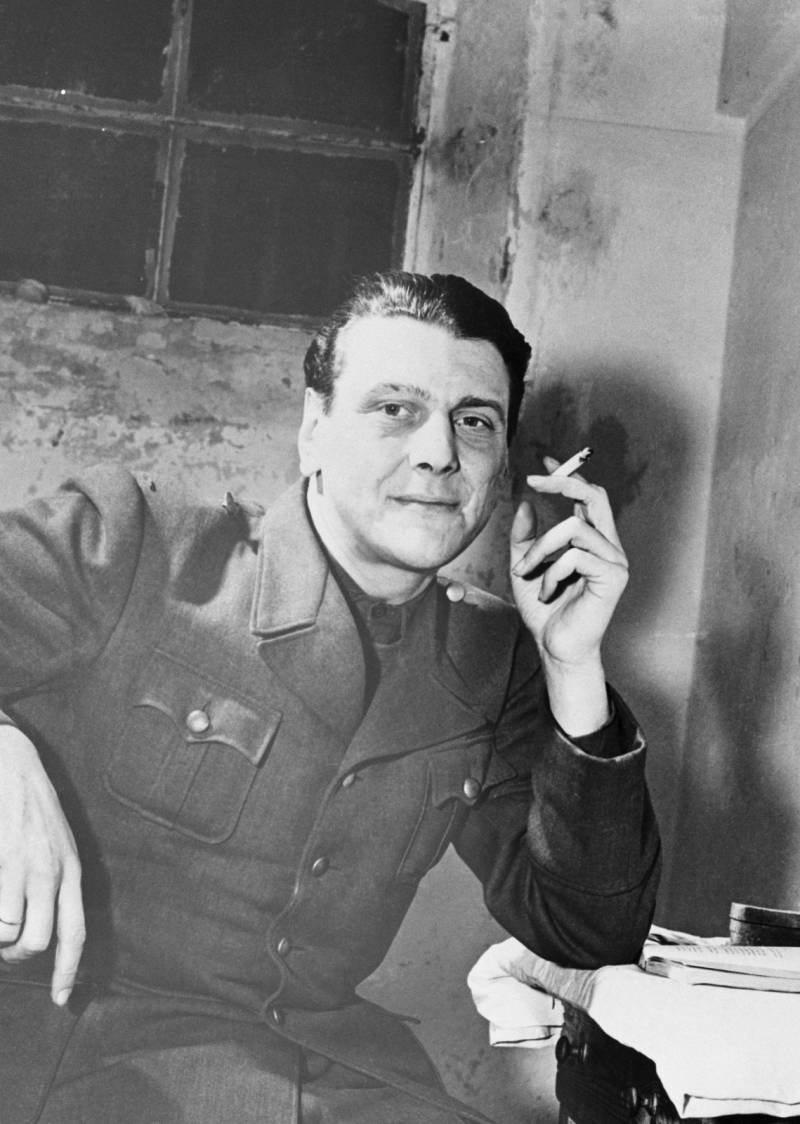
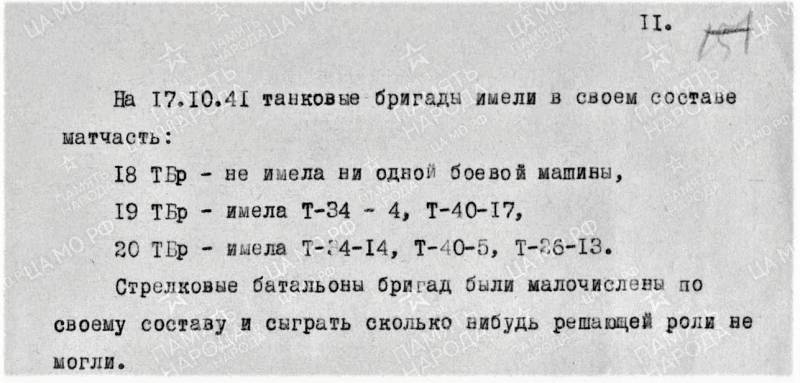
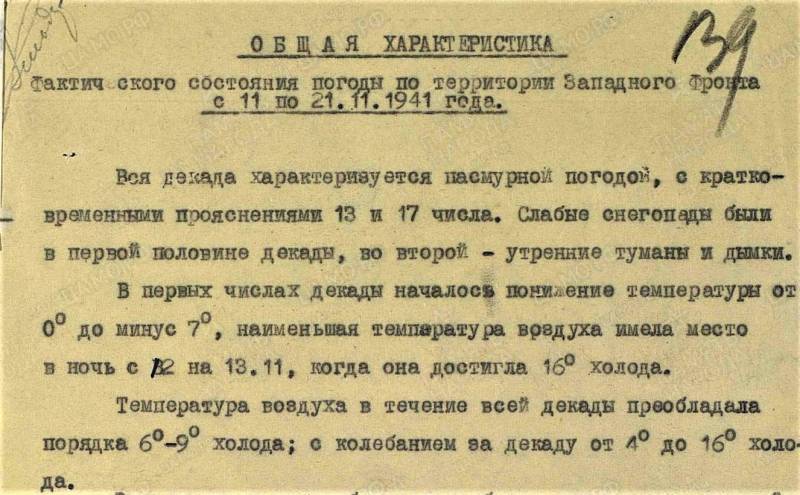

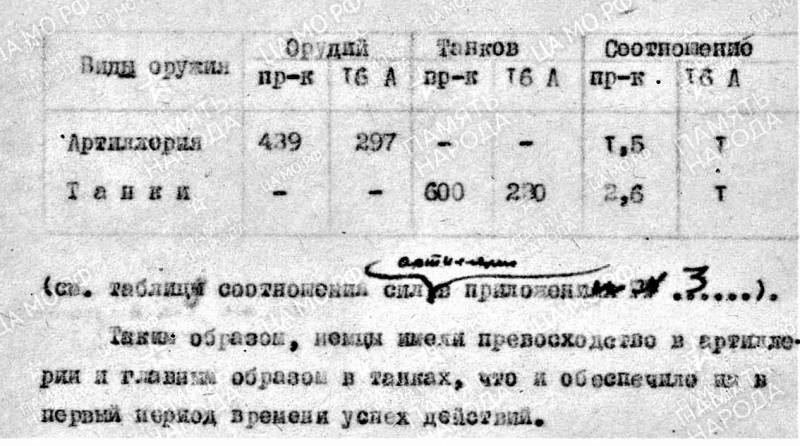
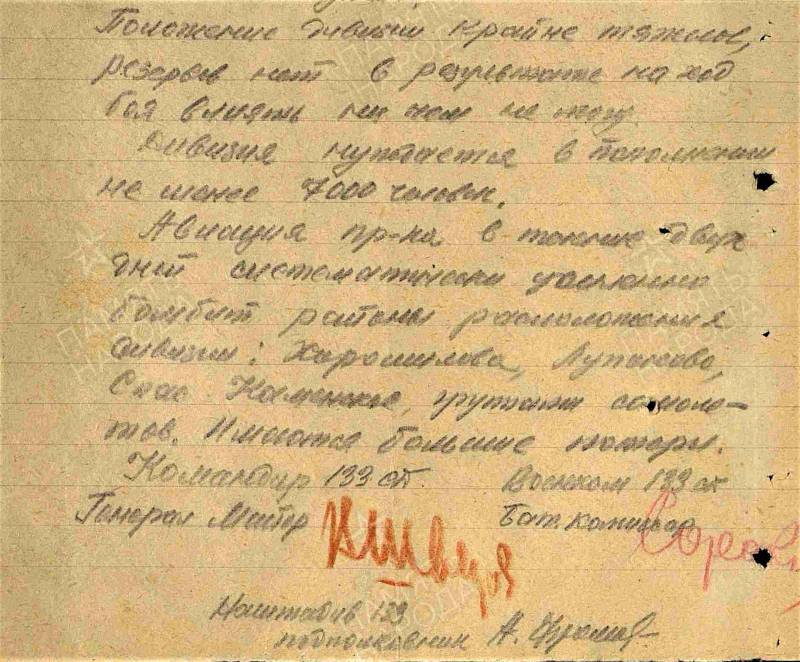
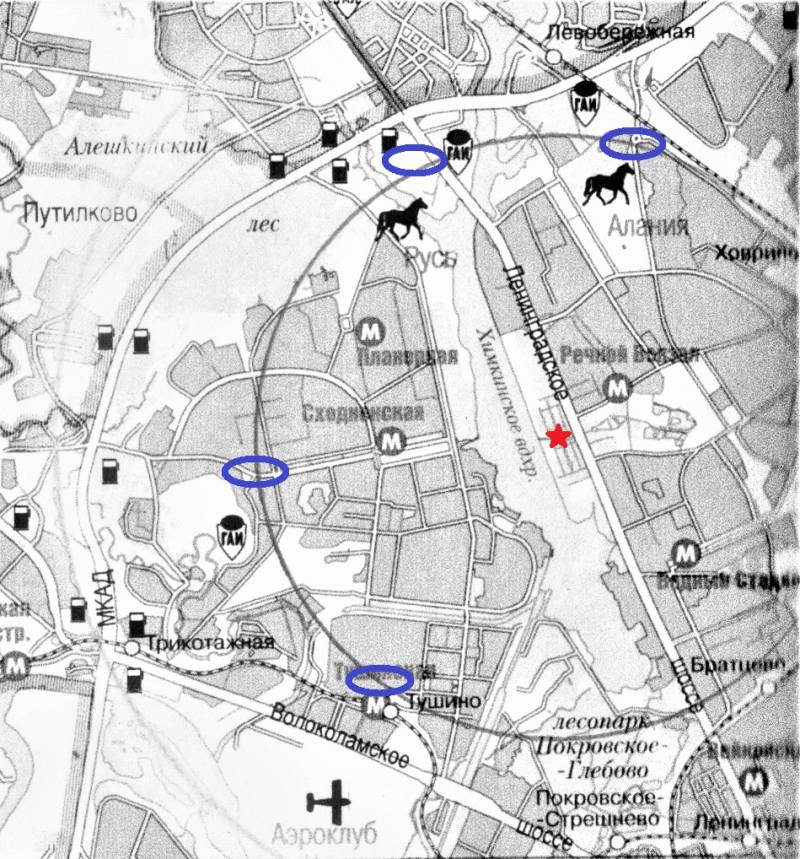
Information